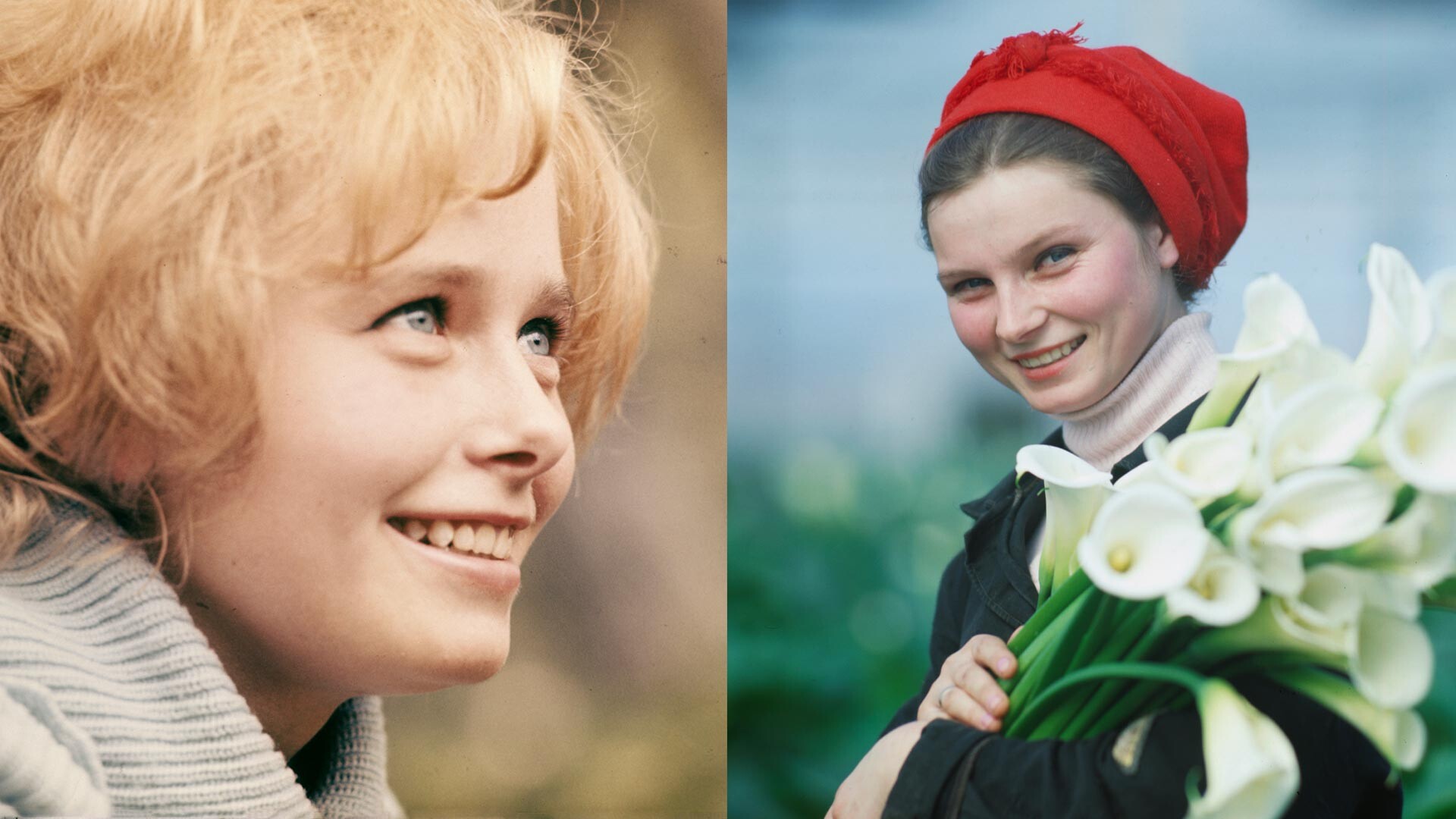
Left: Nadezhda Sveshnikova, laboratory assistant at the technical and chemical laboratory. Right: Tatyana Krysanova, worker at the state farm.
А. Nagralian/Sputnik; G.Yachmenev/TASSMany Soviet movies featured simple women as positive characters – without any special glamor, “from the people”, as the phrase goes. But, as for their antagonists – those were usually well-dressed women with proper makeup, as if walking straight off a western fashion magazine cover.
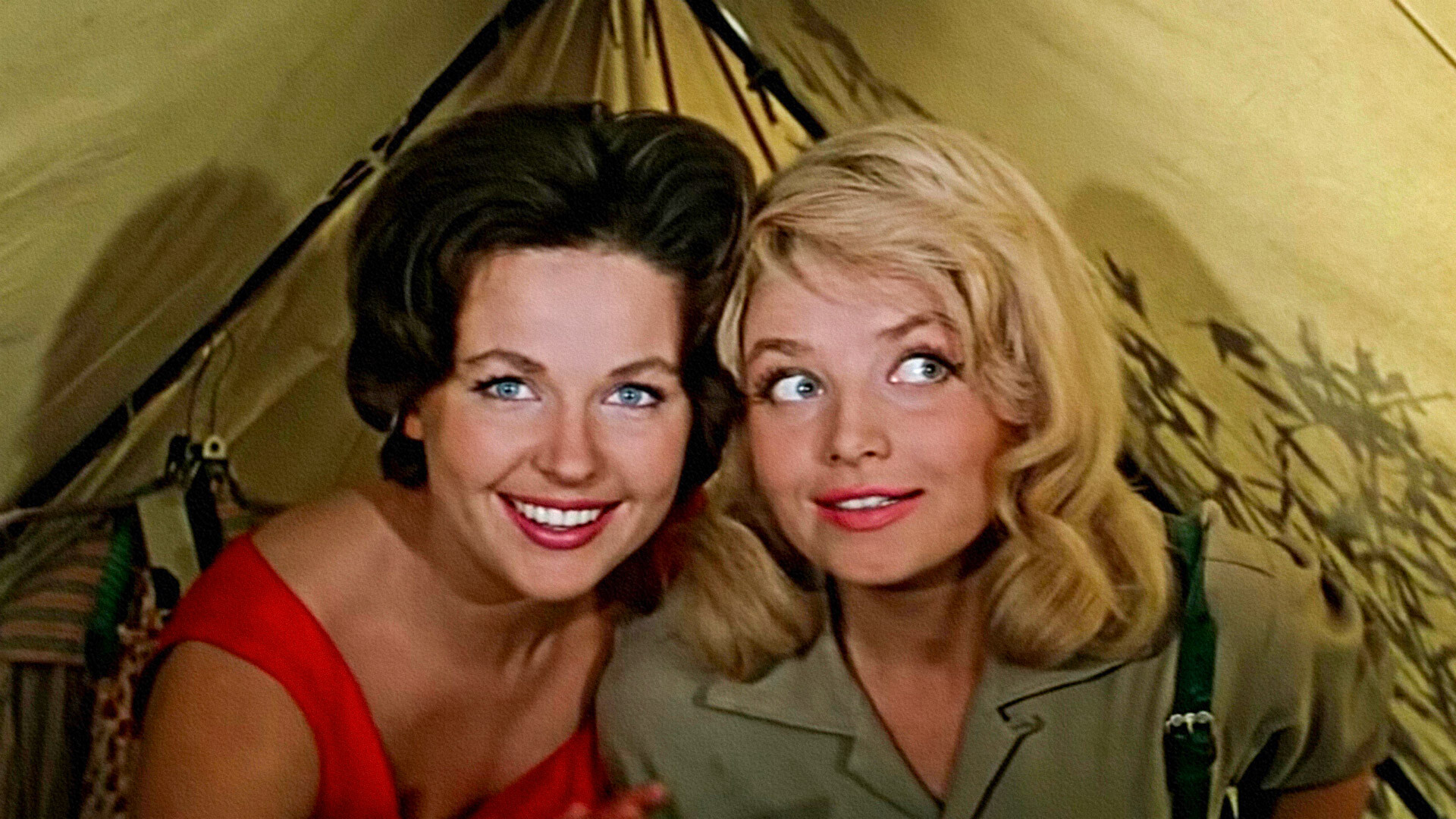
A scene from the 3+2 movie about summer holidays. According to the plot, one of the ladies (left) is a wild animal trainer, and her friend (right) is an actress.
Genrikh Hovhannisyan/Gorky Film Studio, 1963This confrontation can be seen in such movies as ‘The Diamond Arm’ (1969), ‘Love and Doves’ (1985), ‘The Girls’ (1961) and others.
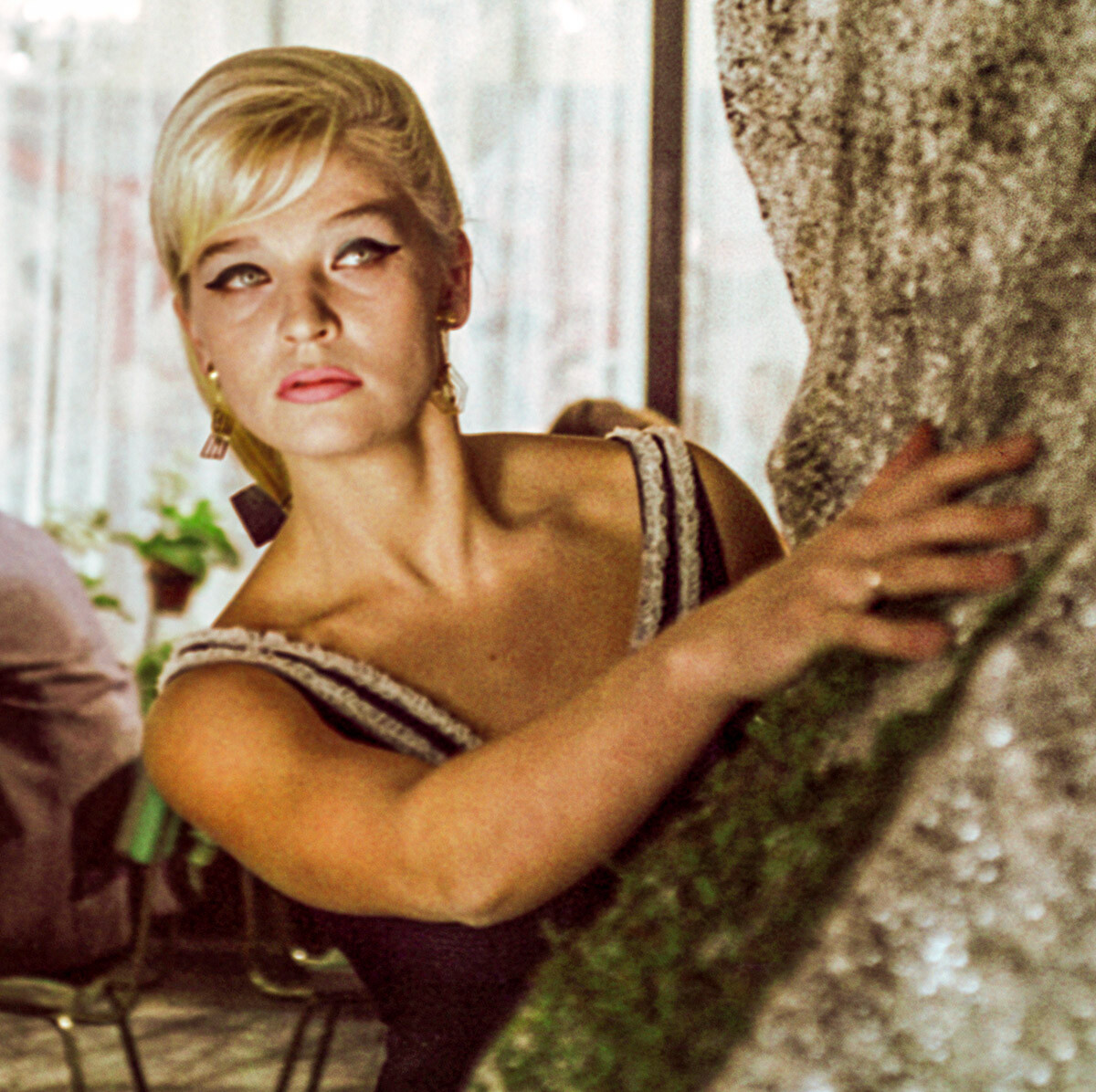
‘The Diamond Arm’. This is the antagonist, the lady from the criminal world.
SputnikAt that time, a firm agenda existed – one shouldn’t strive for external beauty, but for internal beauty, instead. Despite this, however, Soviet women were still watching fashion trends and taking care of themselves.
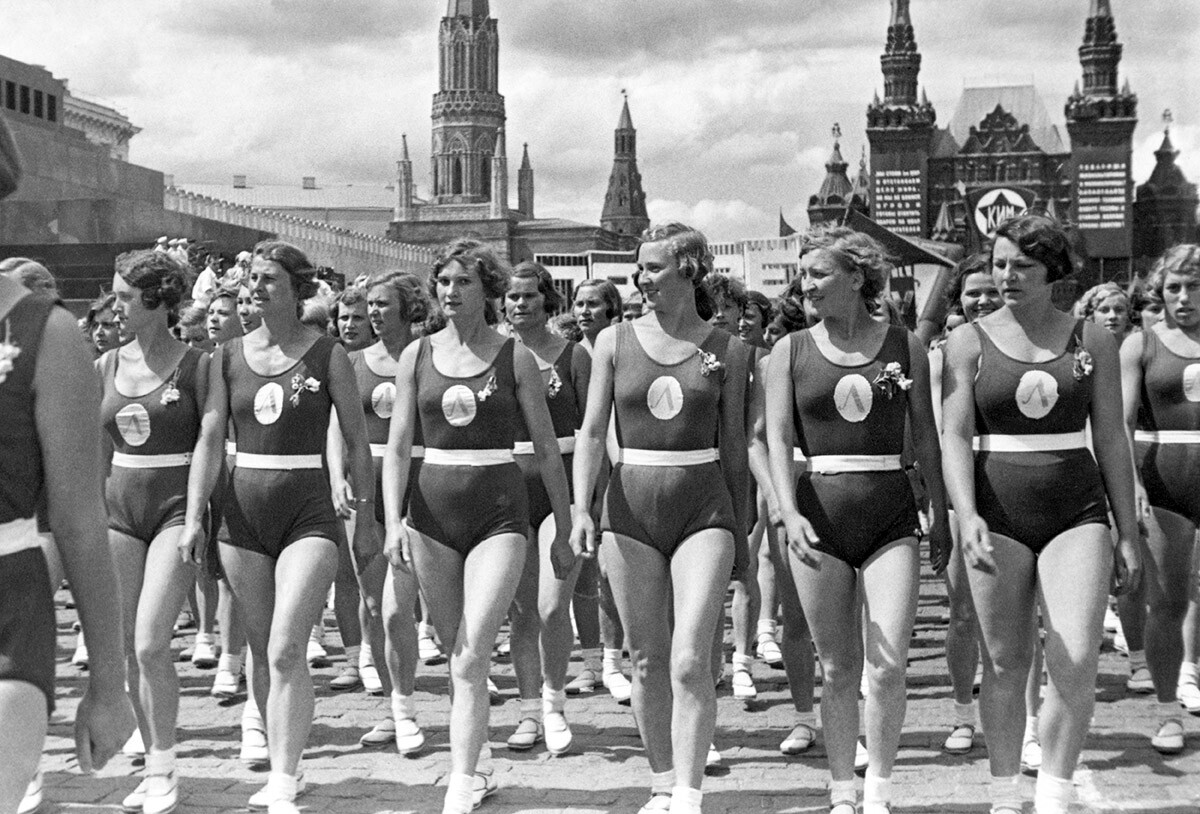
Participants of the Parade of Athletes march in Red Square, Moscow.
Nikolai Kubeev/TASSBeauty in the Soviet understanding began with health. Female figure trends were always changing: interchangeably, both thin and plump body shapes were considered exemplary. In the USSR, moderately plump, stout and resilient women were considered beautiful. Soviet cities annually hosted athletes parades that demonstrated the beautiful athletic bodies of Soviet women and men.
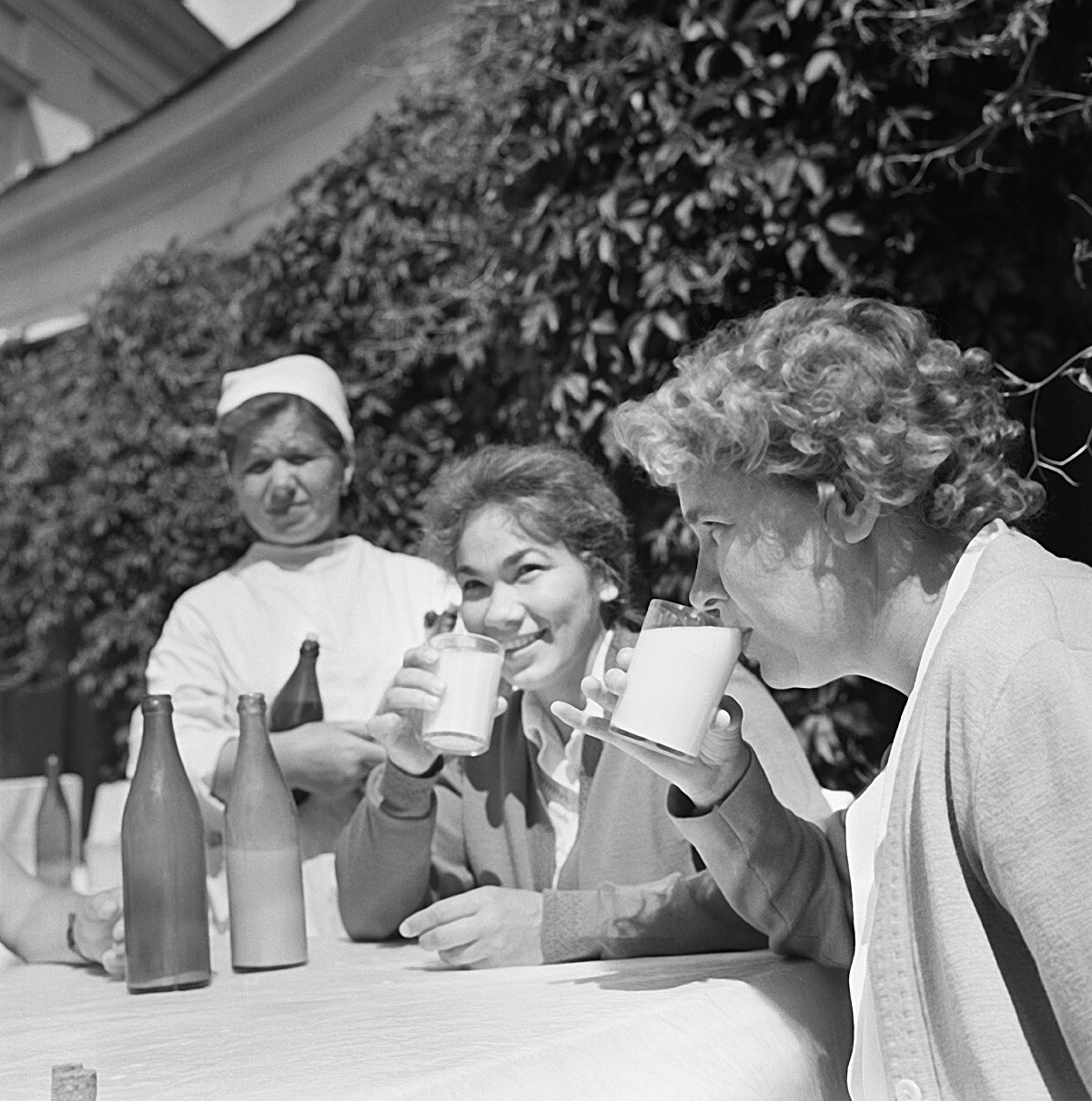
Moscow Region, 1964, health resort.
Lev Porter/TASSAt the beginning of its existence, the USSR struggled against famine, malnutrition, tuberculosis, and – as a result – the excessive thinness of its citizens. But, already in the 1960-1970s came the period of struggle against excessive weight and the illnesses that came with it. Among popular methods were the system of ‘tables’ in sanatoriums, therapeutic fasting and ‘fasting’ days consuming only kefir.
To maintain a healthy weight in the Soviet Union, there were free sports clubs for any age; in the 1980s, even fitness clubs similar to modern ones appeared.
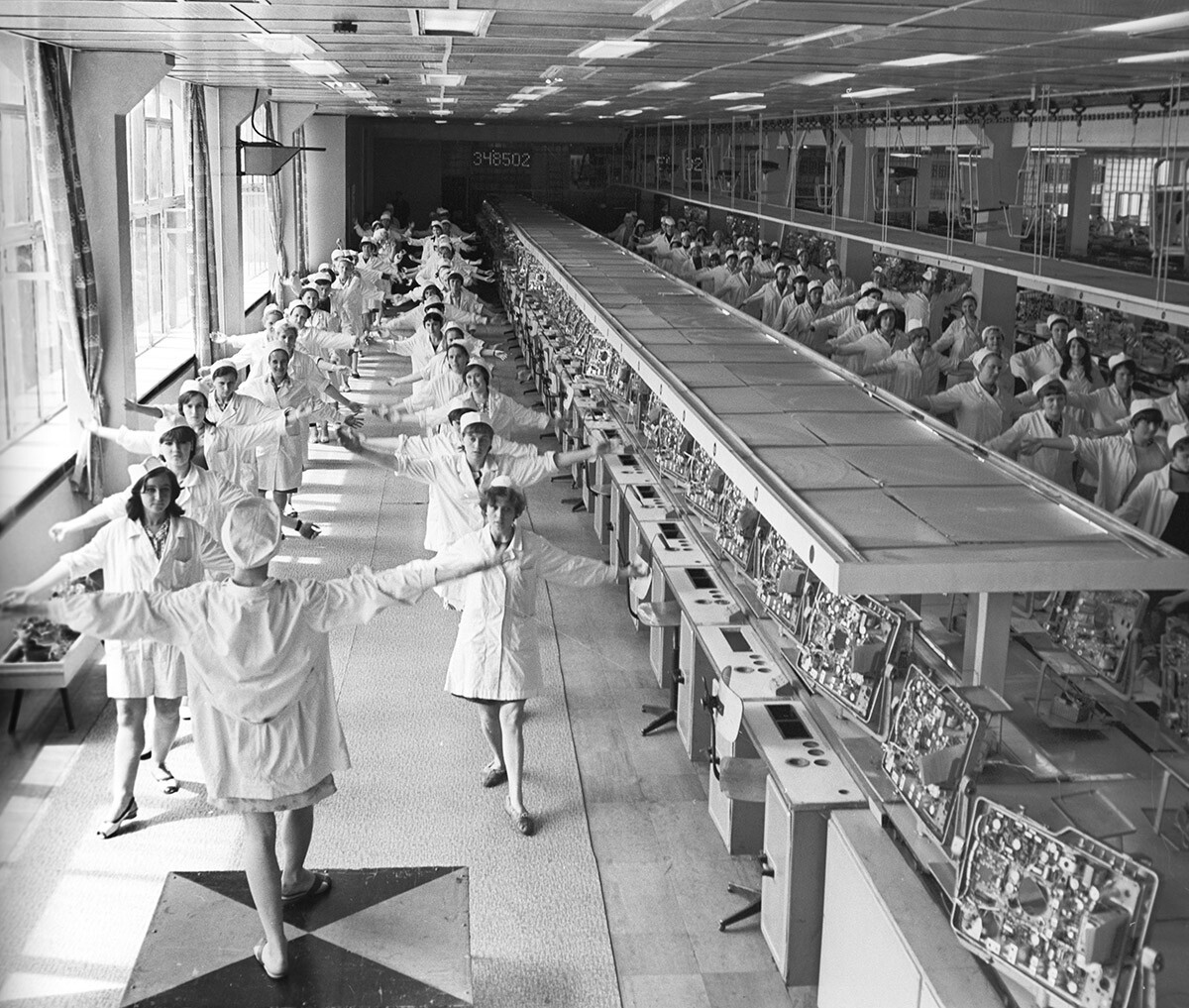
During exercises at the TV factory. 1969.
B. Krishtul/SputnikBesides, at work people always had breaks for “workplace gymnastics”; at home, almost every family had kettlebells, dumbbells, pull-up bars, skis and ice skates.
It was hard to spot a woman with a short haircut back at the beginning of the 20th century. Everyone wore long braids, which signaled if a woman was married, single or engaged. But, already in the early Soviet years, progressive Soviet women were cutting off their braids and getting “boyish” haircuts and styles. Some would also put a Russian head scarf over their hair. Short hairstyles were more convenient, more modern and required less maintenance.
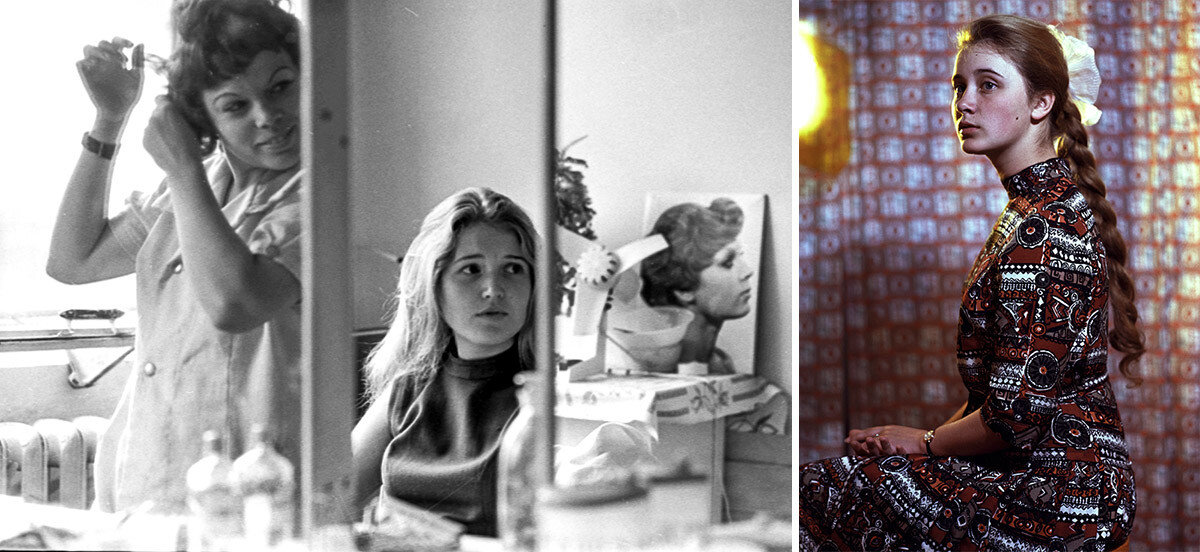
Braids were not at all banned, of course, but they were often left as an attribute of schoolgirls or folklore ensembles. Even most movie stars in the USSR wore short hair.
The USSR didn’t have beauty salons in the modern understanding, but there were a large number of affordable hairdressers available. Women would also get their manicures done simultaneously.
Bright makeup was taboo among schoolgirls and university students; such a “fancy” look could even be denounced at a Komsomol meeting. But, girls who were a bit older often accentuated their lips with red lipstick; however, that was often all they applied (no mascara at all!).
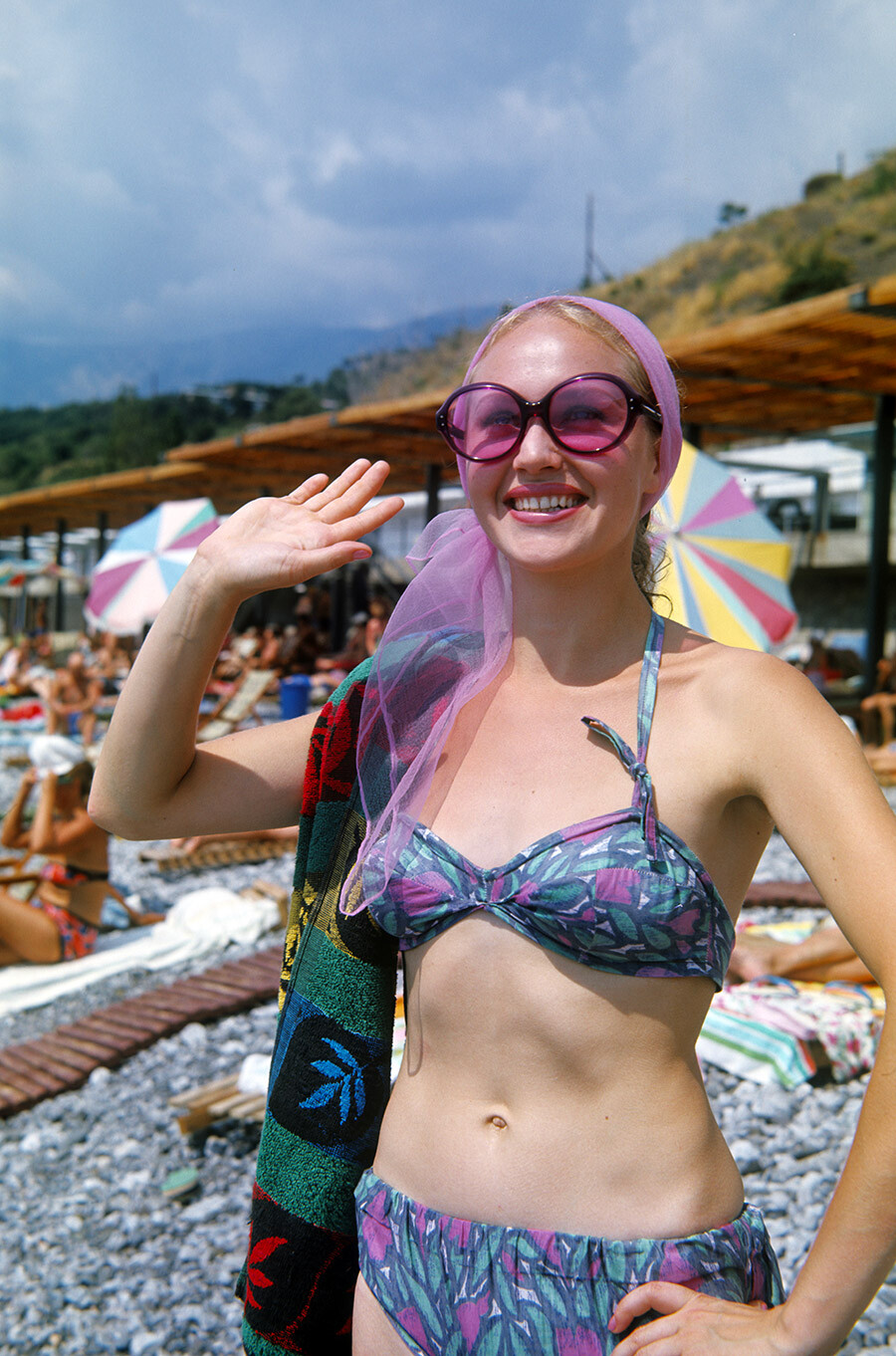
An abundance of decorative makeup, as it was considered back then, was more appropriate for going out to a theater or to see a movie.
There were not as many brands and trends back then as today, especially in a closed country. But, of course, women saw trendy dress styles in movies and in magazines and also wanted something similar for themselves. Not every woman could afford to order clothes from a tailor; instead, many could decently sew, knit and embroider for themselves. The skill of making pretty clothes with one’s own hands was highly valued during these years. As always.
Dear readers,
Our website and social media accounts are under threat of being restricted or banned, due to the current circumstances. So, to keep up with our latest content, simply do the following:
If using any of Russia Beyond's content, partly or in full, always provide an active hyperlink to the original material.
Subscribe
to our newsletter!
Get the week's best stories straight to your inbox